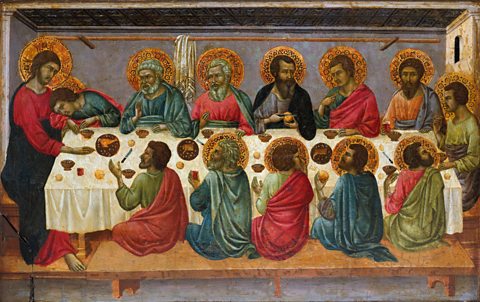Proximity
Proximity means how near things are to each other. Unity can be created through proximity when parts of a composition are close together. The closer together they are, the more we tend to see them as a group.

Vanita Still Life by Pieter Claes (1625) features a number of objects that are different in their size, colour, shape and texture.
But there is unity in the composition because the objects are in close proximity to each other. Their closeness links them together. They are also united because they symbolise themes of life, death and passing time.


Las Meninas (Diego Velazquez, c.1656) creates unity through the proximity of figures in this group portrait.
Most of figures shown are in the same room. But the figure on the stairs in the background, and the image of the king and queen reflected in the mirror read as part of the same unified composition because they are positioned in amongst the main group.


This painting of The Last Supper (Ugolino di Nerio, c.1325-1330) shows unity due to the proximity of the men sat having dinner at the table. The repeated halos further link the men together - the fact Judas does not have one makes him stand apart from the other twelve men.
